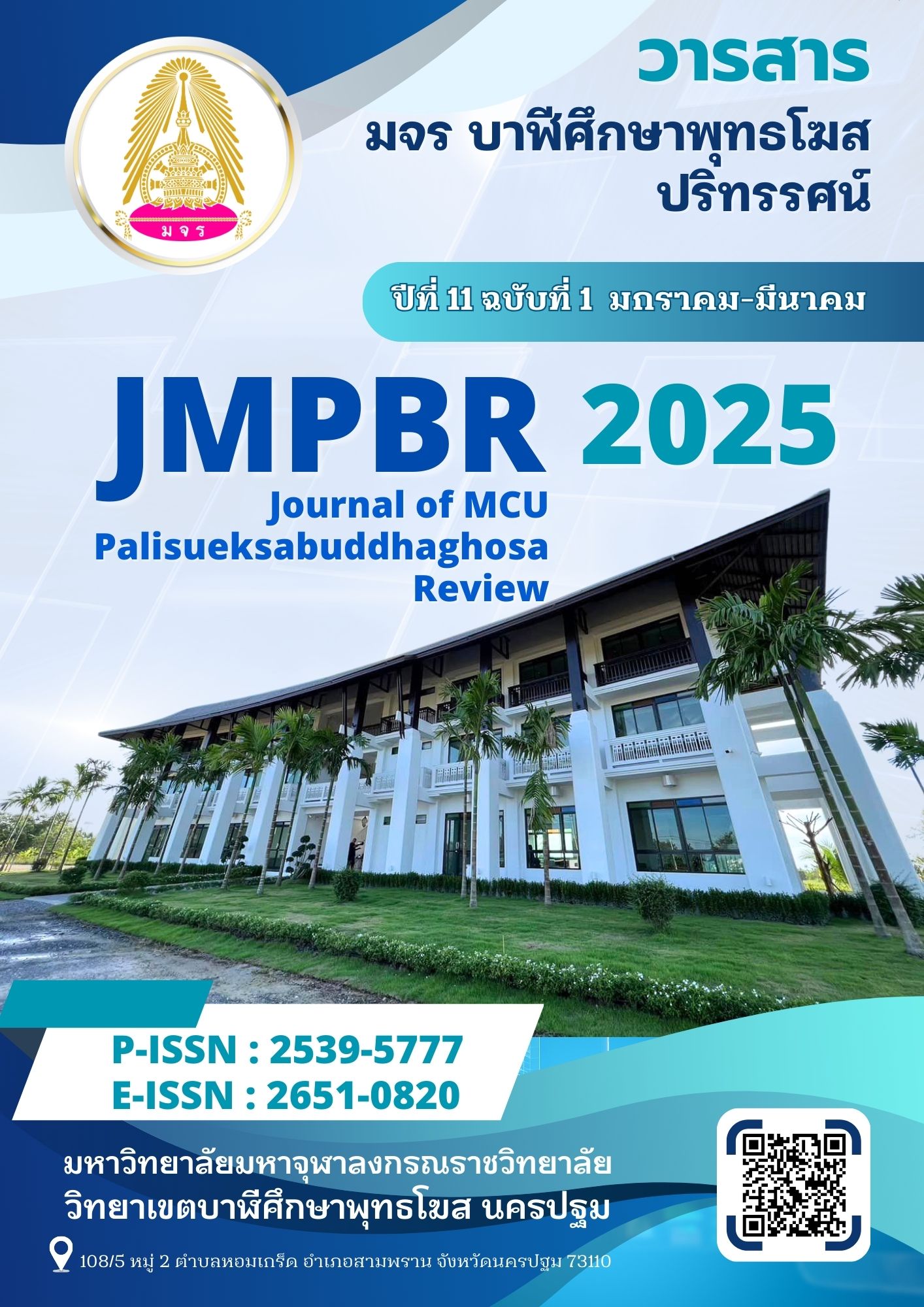an analytical study of kusala citta development in the abhidhammatthasangaha scripture
Main Article Content
Abstract
This article is part of the research on “Analysis of the development of Kusalacitta in the Abhidhammathasangha” has the objective of (1) To study the teachings on Kusalacitta in Buddhist scriptures. (2) To study Kusalacitta in the Abhidhammathasangha. (3) To Analyze the development Kusalacitta in the Abhidhammatthasangha. The research method is qualitative research. The research tools were collected from documents and in-depth interviews. and analyzed descriptive data.
The research results found that: Kusalacitta refers to the nature that causes sinfulness to be shaken or the nature of nature that destroys the sinful that the wise person should abhor. Kusala is a condition that first appears in the mind. By first purifying the sins in the mind. In order to be a base to support cleanliness that is a condition of merit to replace in the mind or merit is a state of abstaining from all bad deeds and sins. For example, Kusala Kammapatha has 10 paths that create meritorious kamma, including refraining from 3 corrupt bodies, 4 corrupt speech, and 3 corrupt minds. When abstaining is called kusala. Kusalacitta is classified in the Buddha's words as "sabbapapassa akaraṇaṃ" which means not doing all sins. As for merit, it is included in the Buddha's words: “Kusalassupasampadā” means doing good to the utmost, but both of these are for the same benefit. According to the Buddha's words: “Sacittapariyodapanam” means purifying one's mind.
There are three levels of development of virtuous consciousness in the Abhidhammathasangha: (1) Development of virtuous consciousness at the basic level, including the 8 Maha Kusala cittas, by means of giving alms, keeping the precepts, and practicing meditation ; (2) Development of virtuous consciousness at the middle level, rupava. Charakusala 5 and Arupavacarakusala 4 by means of developing samadhi meditation, a state of mind that reaches the form of jhāna, arupajhāna. ; and (3) Developing high levels of kusala consciousness, including lokuttarakusala, developing the 4 mindfulness meditations, raising the mind to enter vipassanā. Consider the trinity able to overcome anusai defilements By Samuchetpahan.
Article Details

This work is licensed under a Creative Commons Attribution-NonCommercial-NoDerivatives 4.0 International License.
Copyright Notice
The content and information in the articles published in Journal of MCU Palisueksabuddhaghosa Review, are regarded as opinions and responsibilities of article author only. It definitely does not mean that the editor must agree or share any responsibility to the author.
Articles, information, content, figure etc. that have been published in the Journal of MCU Palisueksabuddhaghosa Review is considered as the copyright of the Journal. If any individual or organization will to bring any parts of article for promote or to do anything, must be licensed only in official form from the Journal of MCU Palisueksabuddhaghosa Review.
The content and information in the articles published in Journal of MCU Palisueksabuddhaghosa Review, are regarded as opinions and responsibilities of article author only. It definitely does not mean that the editor must agree or share any responsibility to the author.
Articles, information, content, figure etc. that have been published in the Journal of MCU Palisueksabuddhaghosa Review is considered as the copyright of the Journal. If any individual or organization will to bring any parts of article for promote or to do anything, must be licensed only in official form from the Journal of MCU Palisueksabuddhaghosa Review.
References
มหาจุฬาลงกรณ์ราชวิทยาลัย. พระไตรปิฎกภาษาไทยฉบับมหาจุฬาลงกรณราชวิทยาลัย. พระนครศรีอยุธยา : มหาจุฬาลงกรณราชวิทยาลัย, ๒๕๓๙.
วรรณสิทธิ ไวทยะเสวี. คู่มือการศึกษาพระอภิธัมมัตถสังคหะ. (พิมพ์ครั้งที่ ๑๓). กรุงเทพมหานคร : บริษัท แอคทีฟ พริ้นท์ จำกัด, ๒๕๕๗. หน้า ๑๑.

